#blockbuster Bollywood movies
Text
Did you know! Shah Rukh Khan rejected THESE superhit films & then was offered to other stars!
On November 2, Shah Rukh Khan's birthday. The 56-year-old dashing heartthrob has turned down countless blockbuster Bollywood movies. Here is a look at the movies that King Khan turned down, including those starring Sanjay Dutt and Aamir Khan. For more info, visit our blog!
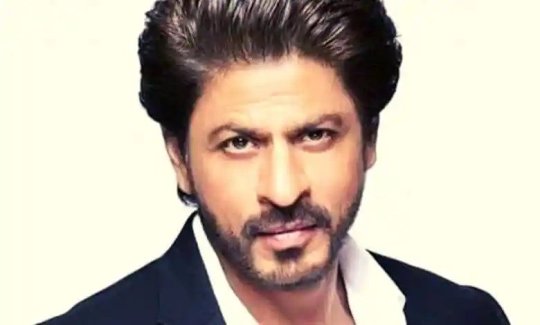
#Shah Rukh Khan#blockbuster Bollywood movies#Bollywood actor#Aamir Khan#Hrithik Roshan#Abhishek Bachchan#Sanjay Dutt#King Khan
0 notes
Text



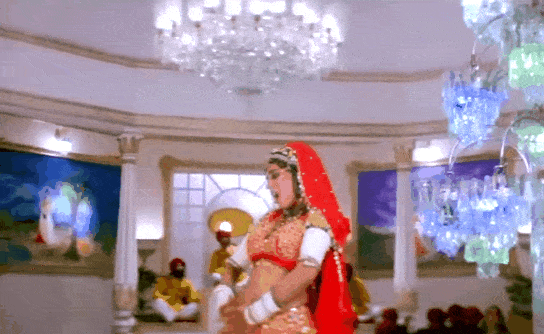

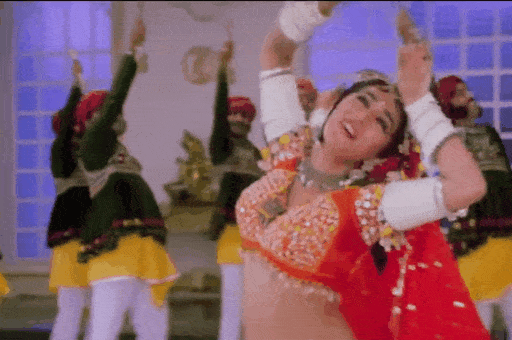
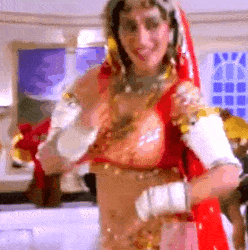
बेग़म बगैर बादशाह किस काम का
बादशाह बगैर बेग़म किस काम की...
#bollywood#evergreen#classic#hindi cinema#beautiful#madhuri dixit#sanjay#sanjaydutt#khalnayak#subhashghai#90s#90s movies#alka yagnik#jackie shroff#gulzar#rakhee#purani#blockbuster#hit#hindi music#hindi songs#madhuri
14 notes
·
View notes
Link
#bollywood#bollywood movies#movies#pathaan#jawan#tiger 3#box office#blockbuster#trend#trending#indian#india#film#cinema#love
2 notes
·
View notes
Text
Salman Khan To Cameo In Singham Again!
Big Bollywood News! Salman Khan to cameo as Chulbul Pandey in 'Singham Again'!
Link to the full story: https://www.theomenmedia.com/post/salman-khan-s-blockbuster-cameo-chulbul-pandey-swaggers-into-singham-again

#Singham Again#Salman Khan#Chulbul Pandey#Bollywood#Diwali Clash#Cameo#Rohit Shetty#Cameo King#Bollywood Crossover#Superstar Saga#Diwali Blockbuster#Cinematic Universe#Action Heroes#Bollywood Magic#Film Fusion#Movie Mashup#Box Office Clash#Bollywood Fans#Singham Squad#Dabangg Dhamaka#Bollywood Buzz#Movie Mania#Star Power#Film Fest 2024#Entertainment News#Bollywood Big News
0 notes
Text
The Latest Buzz in Bollywood: Top Stories You Can't Miss!
Bollywood, the heart of Indian cinema, constantly buzzes with news, gossip, and stories that keep fans and enthusiasts on the edge of their seats. From blockbuster releases to celebrity controversies, there’s always something happening in tinsel town. Here’s a roundup of the latest Bollywood news that’s making headlines.
1. Major Bollywood Release Takes the Box Office by Storm
The much-anticipated movie, Kalki 2898 AD , starring Amitabh Bachchan, Deepika Padukone, Prabhas has finally hit the theaters and is receiving an overwhelming response. The movie, directed by Nag Ashwin, has garnered ₹ 277.40 crore on its opening weekend, making it one of the biggest hits of the year. Critics have praised the film for its gripping storyline and stellar performances.
2. Celebrity Wedding Bells: Sonakshi Sinha and Zaheer Iqbal Ties the Knot
Bollywood's favorite couple, Sonakshi Sinha and Zaheer Iqbal, have finally tied the knot in a grand ceremony. The wedding, held at Mumbai on June 23 2024, was attended by the who's who of Bollywood. Exclusive photos from the event have taken social media by storm, with fans congratulating the newlyweds.
3. Controversy Alert: Rohit Shetty responds to Asim Riaz’s controversial statement “I have so much money you can’t even imagine” on Khatron Ke Khiladi 14
Bollywood star Rohit Shetty has found themselves embroiled in a legal controversy. Rohit Shetty addresses Asim Riaz's remarks and behaviour following the actor-model's dramatic exit from the reality show.
4. Upcoming Movies to Watch Out For
Bollywood has an exciting lineup of movies set to release in the coming months. From Phir Aayi Hasseen Dillruba Movie starring Taapsee Pannu & Vikrant Massey to Stree 2 Movie featuring Rajkummar Rao & Shraddha Kapoor, there’s something for everyone. Here’s a sneak peek into the most anticipated films.
5. Bollywood Fashion: Best Looks from the Red Carpet
The latest red-carpet event saw Bollywood stars bring their fashion A-game. From Explore the Newest Trends and Updates in Bollywood Style Icons for 2024 on Bollywood Hungama, here are the best looks that stole the show.
6. Exclusive Interview: Rajeev Khandelwal Talks About The Success of His Recent Show
In an exclusive interview, Rajeev Khandelwal opens up about their upcoming ott show, The actor discusses their role, the challenges faced during shooting, and what fans can expect from the show.
Bollywood Buzz: Latest Stories and Star-Studded Updates! Bollywood never fails to surprise and entertain its audience with its vibrant stories and star-studded events. Stay tuned for more updates and insider scoops on everything happening in Bollywood!
#Kalki 2898 AD box office collection#Kalki 2898 AD movie reviews#Amitabh Bachchan latest movie#Deepika Padukone new release#Prabhas blockbuster film#Sonakshi Sinha wedding#Zaheer Iqbal marriage#Bollywood celebrity weddings 2024#Rohit Shetty Asim Riaz controversy#Khatron Ke Khiladi 14 drama#Upcoming Bollywood movies 2024#Phir Aayi Hasseen Dillruba release date#Stree 2 cast and release#Bollywood red carpet fashion 2024#Bollywood style icons#Rajeev Khandelwal interview#Rajeev Khandelwal OTT show#Latest Bollywood news#Bollywood gossip 2024#Bollywood blockbuster releases
0 notes
Text
Download mirzapur season 3 👇👇👇👇👇

0 notes
Text
The Great Indian Box Office Riddle: Muscle Mayhem vs. Martyrs' Valor
In the ever-bewildering world of the Indian box office, a new enigma emerges. The war hero epic “Sam Bahadur” stands with quiet dignity, yet it’s the rip-roaring “Animal” that gallops ahead, leaving a shimmering trail of muscled bravado and shattered records. What’s behind this phenomenon? Is it just our hunger for escape, or something more profound at play?**The Seduction of Escapism:**Life’s…

View On WordPress
#2023#action thrillers#Animal movie#audience preferences#blockbuster films#Bollywood paradox#box office trends#cinematic contrasts#cinematic escapades#entertainment vs reality#escapism in film#film industry analysis#genre loyalty#hero worship#Indian box office dynamics#Indian cinema#Indian cultural commentary#marketing in Bollywood#movie choices#Ranbir Kapoor#real-life heroes#Sam Bahadur#societal reflections in cinema#war biopics
0 notes
Text
Amitabh Bachchan's Untold Story: Rare Memorabilia Exposed!
Amitabh Bachchan’s Untold Story: In the glamorous realm of Bollywood, Amitabh Bachchan stands tall as the ‘Shahenshah.’ This legendary actor, known for his iconic roles in movies like ‘Zanjeer,’ ‘Deewar,’ ‘Ram Balram,’ ‘Sholay,’ and ‘Sharaabi,’ continues to captivate hearts even at 81! But did you ever think about owning a piece of his legacy? Well, now you can! 🎥✨
A Glimpse into Amitabh…
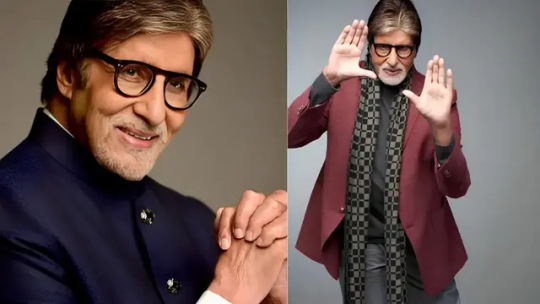
View On WordPress
#Amitabh Bachchan#Amitabh Bachchan Awards#Amitabh Bachchan Blockbusters#Amitabh Bachchan Career#Amitabh Bachchan Characters#Amitabh Bachchan Fans#Amitabh Bachchan Films#Amitabh Bachchan Interviews#Amitabh Bachchan Journey#Amitabh Bachchan Legacy#Amitabh Bachchan Life#Amitabh Bachchan Movies#Big B#Bollywood Great#Bollywood Icon#Bollywood Icon Amitabh#Bollywood Icon Amitabh Bachchan#Bollywood Iconography#Bollywood Legend#Bollywood Star#Bollywood Superstar#Indian Cinema#Indian Film Industry#Indian Film Legend#Legendary Actor
0 notes
Text
HDHub4u:The Ultimate Site for Streaming and Popular Films
Looking for a reliable streaming site to watch new and popular films? HDHub4u is the ultimate solution! Discover a vast library of the latest movies and shows.
Introduction:
In the present era of digitalization, a plethora of individuals across the globe prefer online streaming as their go-to source of entertainment. As there are several streaming platforms to choose from, the process of selecting an appropriate one can be quite arduous. However, if you seek a dependable streaming platform to view the latest and most popular films, HDHub4u is the…

View On WordPress
#Action movies#adventure movies#Animated movies#Blockbuster movies#Bollywood movies#Comedy movies#Drama movies#Family movies#Fantasy movies#film industry news#free movie streaming#HD movies#HDHub4u#HDHub4u review#high-quality streaming#Hollywood movies#latest movie trailers#movie ratings#Movie recommendations#movie reviews#movie suggestions#Movie website#new movie releases#online movie streaming#popular films#romantic movies#sci-fi movies#streaming movies#Thriller movies#top-rated movies
1 note
·
View note
Text
So I guess Film Twitter is apoplectic with rage over some people suggesting they have intermissions in long movies. Not over theaters adding one without the director's consent, but like, at the concept of them
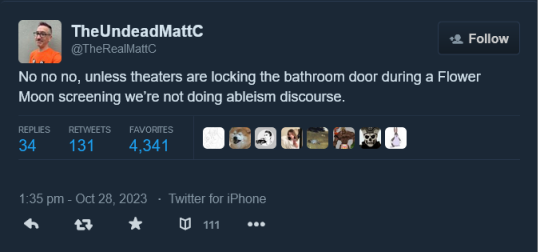
...by which I mean, getting mad at disabled people daring to have complaints. There's a lot of "HAHA are you so STUPID you can't go beforehand? You can't HOLD it for three hours?" and implying you don't deserve to experience art if you can't

And, of course, because Film Twitter is a bunch of insular discourse-addled dipshits, they're tying this...to Marvel. Yes, people are only saying they have health conditions that make sitting still for a three hour movie is because...they're Marvel fans mad at Scorsese, or something?
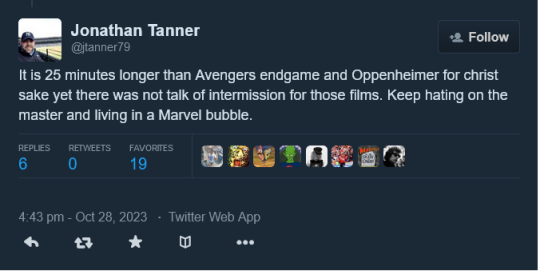
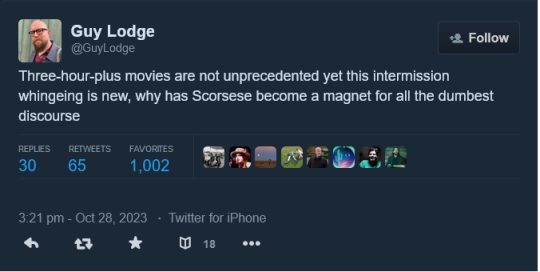
Why is this complaint new? Well, bc runtimes are ballooning to the levels of the old epic filmmaking days of the 50s-70s. And those movies...had intermissions. Multi-act plays have intermissions. Bollywood films have intermissions. Intermissions were literally just abandoned so studios could cram in more screenings, not out of an artistic ideal. But anyone saying "this would make it easy for me to access this film I want to see" needs to be viciously shouted down and called a moronic, lazy child hating on Scorsese bc of "discourse"


I've seen that meme multiple times and Jesus, look at the bizarre disdain for your fellow human beings embedded in it. You dare still bodily exist during a Martin Scorsese movie? You have a disability I don't? Well, I have no problem just peeing beforehand and not buying popcorn or a soda (you should really just sit their quietly until it's done, when you can pull out your phone to log it on Letterboxd), so what's your problem?
Calling people who are into non-blockbuster films "film bros" is mostly untrue, but man, the hardcore Film Twitter types unambiguously check every box. They're certainly dismissive of anyone outside their little box; extremely insulting, in fact, of how anyone who disagrees with them even slightly must be a Marvel-addled hysterical artless moron. Because nothing says "artistic appreciation" like preemptively calling analysis of a movie's choices "discourse" ("Ugh, I can't believe the DISCOURSE about how a movie portraying a morbidly obese man portrays obese people" - what should they talk about, then, if the movie's subject is instantly off the table?) They think the idea that someone out there may have a disability that prevents them from sitting in one place for three and a half hours is a laughable thing made up by the internet; or when people pointed out that a movie only getting one or two screenings a city may be inaccessible to working people, and these bloggers and podcast hosts dunked on the idea that working class people may like art as a hilarious, made-up thing.
I don't know, maaaaaaybe classing the life experiences and complaints of anyone who isn't you as "discourse" and presuming it's made-up kvetching about nothing as a matter of course is bad, cruel nonsense, actually?
781 notes
·
View notes
Text
"Stree 2" haunts its way to ₹573.33 Cr in India!
Link to the full story: https://www.theomenmedia.com/post/stree-2-smashes-box-office-records-nearing-600-crore-in-india

#Stree2#Box Office Blockbuster#Bollywood Magic#Film Twitter#Horror Comedy#Box Office#Bollywood#Movie Milestone#Cinema#Entertainment News#Film Industry#Rajkummar Rao#Shraddha Kapoor#Pankaj Tripathi
0 notes
Text
Film Grammar for Simmers
What is film grammar?
"Film grammar" refers the unstated "rules" of editing used in movies and TV. Different types of shots have different associations and are used by editors to convey different types of information to the audience. Many of these principles were first described in the early 20th century by Soviet directors, but they're used consistently across genre, medium, and even language: Bollywood musicals, English period dramas, Korean horror movies, and American action blockbusters all use many of the same techniques.
Because these rules are so universal, virtually everyone has some internalized understanding of them. Even if they can’t name the different types of shots or explain how editors use images to construct meaning, the average person can tell when the “rules” are being broken. If you’ve ever thought a movie or episode of TV was confusing without being able to say why, there’s a good chance that there was something off with the editing.
Learning and applying the basics of film grammar can give your story a slicker and more-polished feel, without having to download shaders or spend hours in photoshop. It also has the bonus of enhancing readability by allowing your audience to use their knowledge of film and TV to understand what's happening in your story. You can use it to call attention to significant plot details and avoid introducing confusion through unclear visual language.
Best of all, it doesn't cost a dime.
The basics: types of shots
Shots are the basic building block of film. In Sims storytelling, a single shot is analogous to a single screenshot. In film, different types of shots are distinguished by the position of the camera relative to the subject. There are three big categories of shots, with some variation: long shots (LS), medium shots (MS), and close-ups (CU). This diagram, created by Daniel Chandler and hosted on visual-memory.co.uk illustrates the difference:
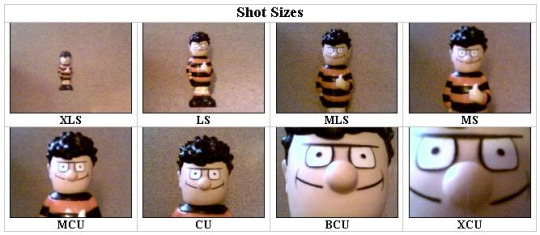
Source: The 'Grammar' of Television and Film, Daniel Chandler, visual-memory.co.uk. Link.
In film, scenes typically progress through the different types of shots in sequence: long shot, medium shot, close-up. When a new scene begins and the characters arrive in a new location, we typically begin with a wide establishing shot of the building’s exterior to show the audience where the scene will be taking place. Next comes a long shot of an interior space, which tells the where the characters are positioned relative to one another. The next shot is a medium shot of the characters conversing, and then finally, a close-up as the conversation reaches its emotional or informational climax. Insert shots are used judiciously throughout to establish themes or offer visual exposition.
Here's another visual guide to the different types of shots, illustrated with stills from Disney animated films.
This guide is almost 2,000 words long! To save your dash, I've put the meat of it under the cut.
Long shot and extreme long shots
A long shot (sometimes also called a wide shot) is one where the entire subject (usually a building, person, or group of people) is visible within the frame. The camera is positioned far away from the subject, prioritizing the details of the background over the details of the subject.
One of the most common uses of long shots and extreme long shots are establishing shots. An establishing shot is the first shot in a scene, and it sets the tone for the scene and is intended to give the viewer the information they’ll need to follow the scene: where a scene is taking place, who is in the scene, and where they are positioned in relation to one another. Without an establishing shot, a scene can feel ungrounded or “floaty.” Readers will have a harder time understanding what’s happening in the scene because on some level, they’ll be trying to puzzle out the answers to the who and where questions, distracting them from the most important questions: what is happening and why?
(I actually like to start my scenes with two establishing shots: an environmental shot focusing on the scenery, and then a second shot that establishes the characters and their position within the space.)
Long shots and extreme long shots have other uses, as well. Because the subject is small relative to their surroundings, they have an impersonal effect which can be used for comedy or tragedy.
In Fargo (1996) uses an extreme long shot to visually illustrate the main character’s sense of defeat after failing to secure funding for a business deal.The shot begins with a car in an empty parking lot, and then we see the protagonist make his way up from the bottom of the frame. He is alone in the shot, he is small, and the camera is positioned above him, looking down from a god-like perspective. All of these factors work together to convey his emotional state: he’s small, he’s alone, and in this moment, we are literally looking down on him. This shot effectively conveys how powerless he feels without any dialogue or even showing his face.
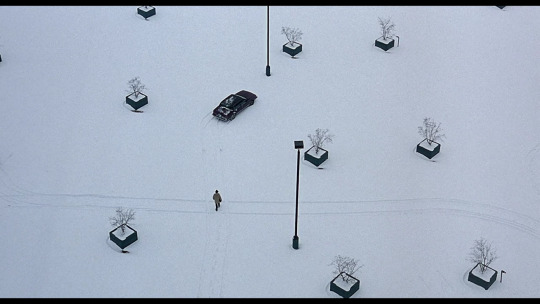
The same impersonal effect can also be used for comic purposes. If a character says something stupid or fails to impress other characters, cutting directly from a close-up to a long shot has a visual effect akin to chirping crickets. In this instance, a long shot serves as a visual “wait, what?” and invites the audience to laugh at the character rather than with them.
Medium Shots
Medium shots are “neutral” in filmmaking. Long shots and close-ups convey special meaning in their choice to focus on either the subject or the background, but a medium shot is balanced, giving equal focus to the character and their surroundings. In a medium shot, the character takes up 50% of the frame. They’re typically depicted from the waist-up and the audience can see both their face and hands, allowing the audience to see the character's facial expression and read their body-language, both important for interpreting meaning.
In most movies and TV shows, medium shots are the bread and butter of dialogue-heavy scenes, with close-ups, long shots, and inserts used for punctuation and emphasis. If you’re closely following the conventions of filmmaking, most of your dialogue scenes will be medium shots following the convention of shot-reverse shot:
youtube
To keep long conversations from feeling too visually monotonous, consider staging the scene as a walk-and-talk. Having two characters move through a space can add a lot of dynamism and visual interest to a scene that might otherwise feel boring or stiff.
Close Ups
Close-ups are close shots of a character’s face. The camera is positioned relatively near to the subject, showing just their head and shoulders. In a close-up, we don’t see any details of the background or the expressions of other characters.
In film, close-ups are used for emphasis. If a character is experiencing a strong emotion or delivering an important line of dialogue, a close-up underscores the importance of the moment by inviting the audience to focus only on the character and their emotion.
Close-ups don’t necessarily need to focus on the speaker. If the important thing about a line of dialogue is another character’s reaction to it, a close-up of the reaction is more effective than a close-up of the delivery.
One of the most iconic shots in Parasite (2019) is of the protagonist driving his employer around while she sits in the backseat, speaking on the phone. Even though she’s the one speaking, the details of her conversation matter less than the protagonist’s reaction to it. While she chatters obliviously in the background, we focus on the protagonist’s disgruntled, resentful response to her thoughtless words and behavior.

In my opinion, Simblr really overuses close-ups in dialogue. A lot of conversation scenes are framed entirely in close-ups, which has the same effect of highlighting an entire page in a textbook. The reader can’t actually tell what information is important, because the visuals are screaming that everything is important. Overusing close-ups also cuts the viewer off from the character’s body language and prevents them from learning anything about the character via their surroundings.
For example, a scene set in someone’s bedroom is a great opportunity for some subtle characterization—is it tidy or messy? what kind of decor have they chosen? do they have a gaming computer, a guitar, an overflowing bookshelf?—but if the author chooses to use only close-ups, we lose out on a chance to get to know the character via indirect means.
Inserts
An insert shot is when a shot of something other than a character’s face is inserted into a scene. Often, inserts are close-ups of a character’s hands or an object in the background. Insert shots can also be used to show us what a character is looking at or focusing on.
In rom-com The Prince & Me (2004) (see? I don’t just watch crime dramas…) the male lead is in an important meeting. We see him pick up a pen, look down at the papers in front of him, and apparently begin taking notes, but then we cut to an insert shot of his information packet. He’s doodling pictures of sports cars and is entirely disengaged from the conversation. Every other shot in the scene is an establishing shot or a medium shot or a close-up of someone speaking, but this insert gives us insight into the lead’s state of mind: he doesn’t want to be there and he isn’t paying attention.

Insert shots are, in my opinion, also used ineffectively on Simblr. A good insert gives us extra insight into what a character is thinking or focusing on, but a poorly-used insert feels…unfocused. A good insert might focus on pill bottles on a character’s desk to suggest a chemical dependency, on a family picture to suggest duty and loyalty, on a clock to suggest a time constraint, on a pile of dirty laundry or unanswered letters to suggest a character is struggling to keep up with their responsibilities. An ineffective insert shot might focus on the flowers in the background because they’re pretty, on a character’s hands because it seems artsy, on the place settings on a dining table because you spent forever placing each one individually and you’ll be damned if they don’t make it into the scene. These things might be lovely and they might break up a monotonous conversation and they might represent a lot of time and effort, but if they don’t contribute any meaning to a scene, consider cutting or repurposing them.
I want to emphasize: insert shots aren’t bad, but they should be carefully chosen to ensure they’re enhancing the meaning of the scene. Haphazard insert shots are distracting and can interfere with your reader’s ability to understand what is happening and why.
Putting it all together
One of the most basic principles of film theory is the Kuleshov effect, the idea that meaning in film comes from the interaction of two shots in sequence, and not from any single shot by itself. In the prototypical example, cutting from a close-up of a person’s neutral expression to a bowl of soup, children playing, or soldiers in a field suggests hunger, worry, or fear, respectively.
youtube
The Kuleshov effect is the essence of visual storytelling in a medium like Simblr. You can elevate your storytelling by thinking not only about each individual shot, but about the way they’ll interact and flow into one another.
Mastering the basics of film grammar is a great (free!) way to take your storytelling to the next level. To learn more, you can find tons of guides and explainers about film grammar for free online, and your local library doubtless has books that explain the same principles and offers additional analysis.
Happy simming!
#armorica tips#armorica ooc#i finally got off my ass to finish this guide which i started back in August right before I got extremely sick and ended up in the hospital#anyway....hope you enjoyed this post which was a veiled excuse for me to complain about how people overuse close-ups and inserts#and i can't tell what's happening in their stories ;fdsklsjadf;laksdf#Youtube
329 notes
·
View notes
Text

Download skanda full movie 👇👇👇👇👇👇
#bollywood movies#south indian movies#movies#web serial#web series#rampothineni#sreeleela#action#superhit#blockbuster
0 notes
Text
By Vidya Krishnan
GOA, India — My niece was just 4 years old when she turned to my sister-in-law in a packed movie theater in Mumbai and asked about gang rape for the first time.
We were watching the latest Bollywood blockbuster about vigilante justice, nationalistic fervor and, of course, gang rape. Four male characters seized the hero’s sister and dragged her away. “Where are they taking Didi?” my niece asked, using the Hindi word for “elder sister.” It was dark, but I could still make out her tiny forehead, furrowed with concern.
Didi’s gang rape took place offscreen, but it didn’t need to be shown. As instinctively as a newborn fawn senses the mortal danger posed by a fox, little girls in India sense what men are capable of.
You may wonder, “Why take a 4-year-old to such a movie?” But there is no escaping India’s rape culture; sexual terrorism is treated as the norm. Society and government institutions often excuse and protect men from the consequences of their sexual violence. Women are blamed for being assaulted and are expected to sacrifice freedom and opportunity in exchange for personal safety. This culture contaminates public life — in movies and television; in bedrooms, where female sexual consent is unknown; in the locker room talk from which young boys learn the language of rape. India’s favorite profanities are about having sex with women without their consent.
It is the specific horror of gang rape that weighs most heavily on Indian women that I know. You may have heard of the many gruesome cases of women being gang-raped, disemboweled and left for dead. When an incident rises to national attention, the kettle of outrage boils over, and women sometimes stage protests, but it passes quickly. All Indian women are victims, each one traumatized, angry, betrayed, exhausted. Many of us think about gang rape more than we care to admit.
In 2011 a woman was raped every 20 minutes in India, according to government data. The pace quickened to about every 16 minutes by 2021, when more than 31,000 rapes were reported, a 20 percent increase from the previous year. In 2021, 2,200 gang rapes were reported to authorities.
But those grotesque numbers tell only part of the story: 77 percent of Indian women who have experienced physical or sexual violence never tell anyone, according to one study. Prosecutions are rare.
Indian men may face persecution because they are Muslims, Dalits (untouchables) or ethnic minorities or for daring to challenge the corrupt powers that be. Indian women suffer because they are women. Soldiers need to believe that war won’t kill them, that only bad luck will; Indian women need to believe the same about rape, to trust that we will come back to the barracks safe each night, to be able to function at all.
Reports of violence against women in India have risen steadily over the decades, with some researchers citing a growing willingness by victims to come forward. Each rape desensitizes and prepares society to accept the next one, the evil becoming banal.
Gang rape is used as a weapon, particularly against lower castes and Muslims. The first instance that women my age remember was in 1980, when Phoolan Devi, a lower-caste teenager who had fallen in with a criminal gang, said she was abducted and repeatedly raped by a group of upper-caste attackers. She later came back with members of her gang and they killed 22 mostly upper-caste men. It was a rare instance of a brutalized woman extracting revenge. Her rape might never have made headlines without that bloody retribution.
Ms. Devi threw a spotlight on caste apartheid. The suffering of Bilkis Bano — the defining gang rape survivor of my generation — highlighted the boiling hatred that Indian institutions under Prime Minister Narendra Modi, a Hindu nationalist, have for Muslim women.
In 2002 brutal violence between Hindus and Muslims swept through Gujarat State. Ms. Bano, then 19 and pregnant, was gang raped by an angry Hindu mob, which also killed 14 of her relatives, including her 3-year-old daughter. Critics accuse Mr. Modi — Gujarat’s top official at the time — of turning a blind eye to the riots. He has not lost an election since.
Ms. Bano’s life took a different trajectory. She repeatedly moved houses after the assault, for her family’s safety. Last August, 11 men who were sentenced to life in prison for raping her were released — on the recommendation of a review committee stacked with members of Mr. Modi’s ruling party. After they were freed, they were greeted with flower garlands by Hindu right-wingers.
The timing was suspicious: Gujarat was to hold important elections a few months later, and Mr. Modi’s party needed votes. A member of his party explained that the accused, as upper-caste Brahmins, had “good” values and did not belong in prison. Men know these rules. They wrote the rule book. What’s most terrifying is that releasing rapists could very well be a vote-getter.
After Ms. Bano, there was the young physiotherapy student who in 2012 was beaten and raped on a moving bus and penetrated with a metal rod that perforated her colon before her naked body was dumped on a busy road in New Delhi. She died of her injuries. Women protested for days, and even men took part, facing water cannons and tear gas. New anti-rape laws were framed. This time was different, we naïvely believed.
It wasn’t. In 2018 an 8-year-old Muslim girl was drugged and gang raped in a Hindu temple for days and then murdered. In 2020 a 19-year-old Dalit girl was gang-raped and later died of her injuries, her spinal cord broken.
The fear, particularly of gang rape, never fully leaves us. We go out in groups, cover ourselves, carry pepper spray and GPS tracking devices, avoid public spaces after sunset and remind ourselves to yell “fire,” not “help” if attacked. But we know that no amount of precaution will guarantee our safety.
I don’t understand gang rape. Is it some medieval desire to dominate and humiliate? Do these men, with little power over others, feeling inadequate and ordinary, need a rush of power for a few minutes?
What I do know is that other men share the blame, the countless brothers, fathers, sons, friends, neighbors and colleagues who have collectively created and sustain a system that exploits women. If women are afraid, it is because of these men. It is a protection racket of epic proportions.
I’m not asking merely for equality. I want retribution. Recompense. I want young girls to be taught about Ms. Bano and Ms. Devi. I want monuments built for them. But men just want us to forget. The release of Ms. Bano’s rapists was about male refusal to commemorate our trauma.
So we build monuments with words and our memories. We talk to one another about gang rape, keeping it at the center of our lives. We try to explain to our youngest, to start protecting them.
This is how the history of the defeated is recorded. That’s what it all boils down to: a fight between forgetting and remembering.
151 notes
·
View notes
Text

Zaira Wasim, whose debut in Bollywood was with the all-time blockbuster movie Dangal and the next film was Secret Super Star Super Blockbuster, but she left all this worldly success only for the sake of her beloved religion Islam and ended all relations with Bollywood. On June 30, 2019, Zaira Wasim announced that she is going to end her film industry career forever because all this shameless promiscuity, dancing, singing and wearing small clothes in a dirty manner and romancing with other men is her religion. Islam does not teach this because they have now fallen in love with Hijab and Burkha and have understood why Islam always forbids the dirty things from which it is prohibited and success lies only in living the way of Islam. Not by earning money by wearing short clothes shamelessly.
#muslim#islamiyet#islam#islampost#welcome to islam#convert to islam#modern art#japanese art#art history#original character#religionpost#jesus#study motivation#allah
11 notes
·
View notes